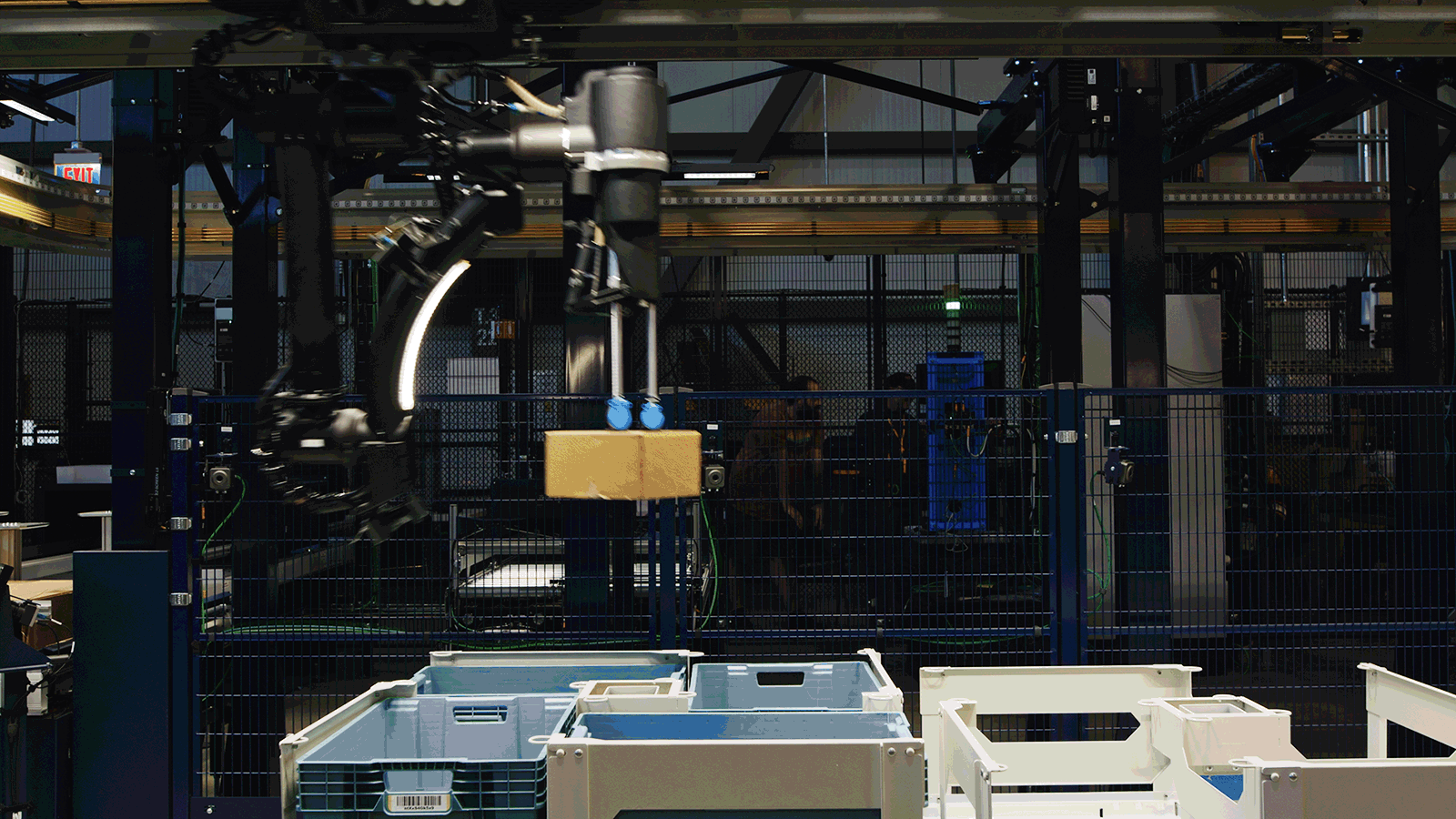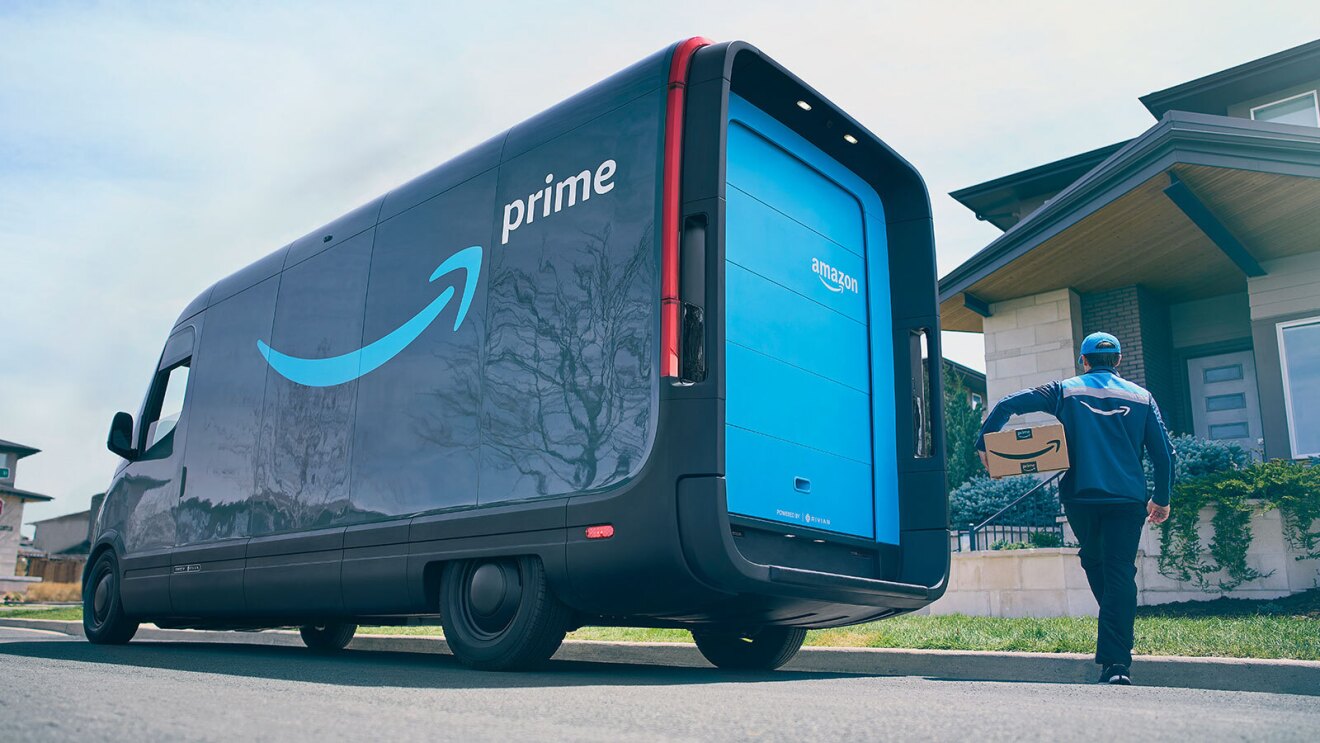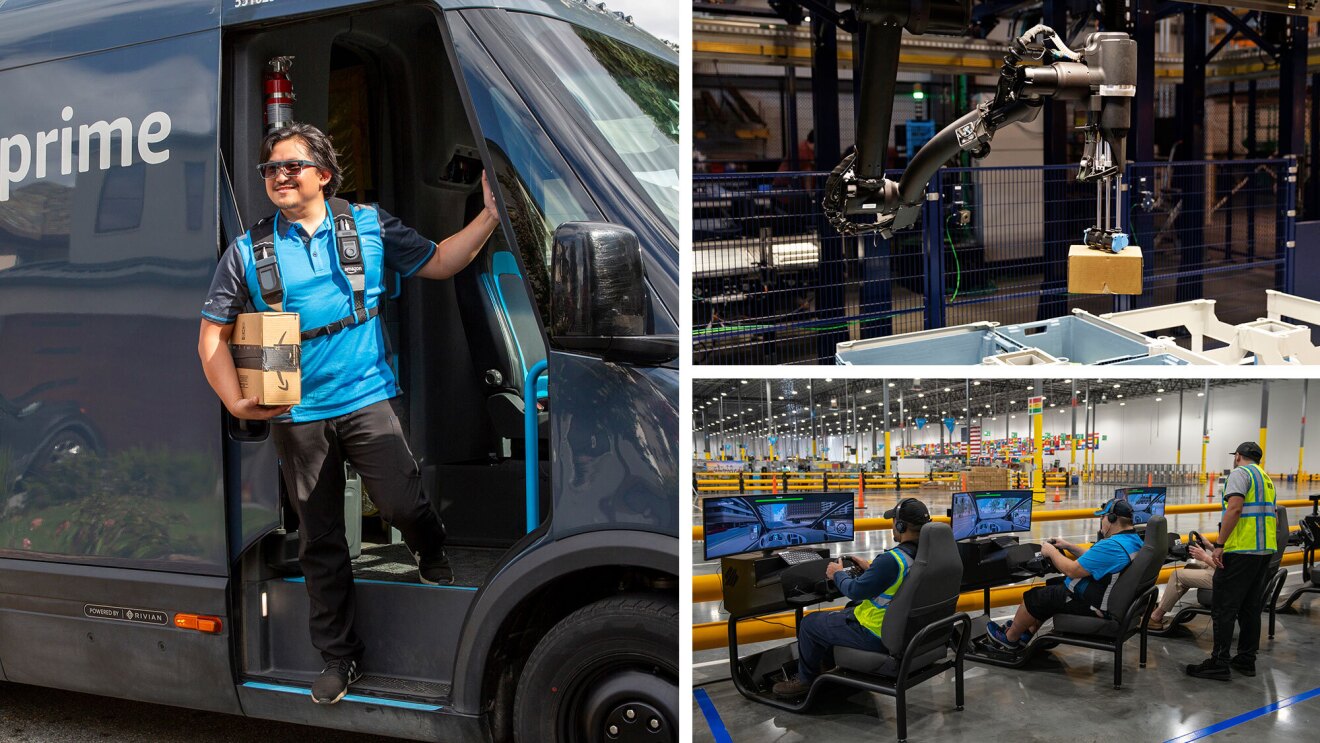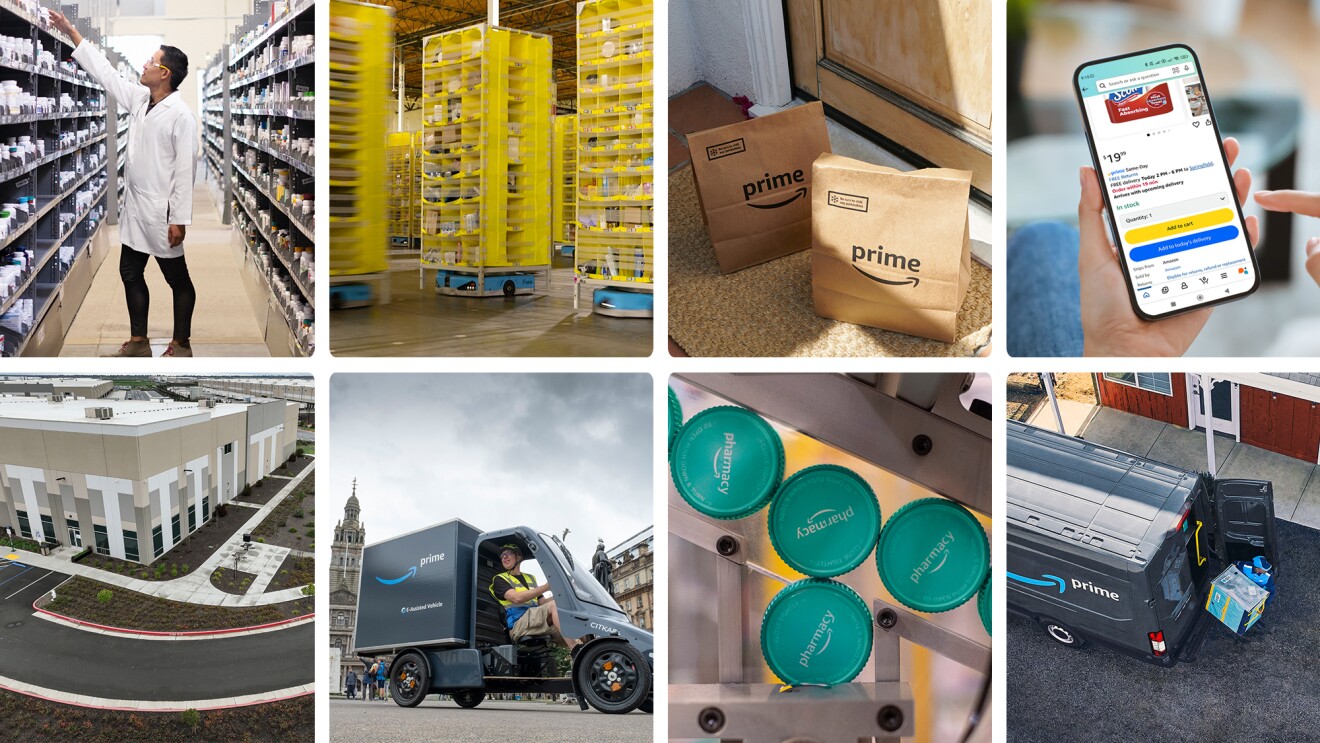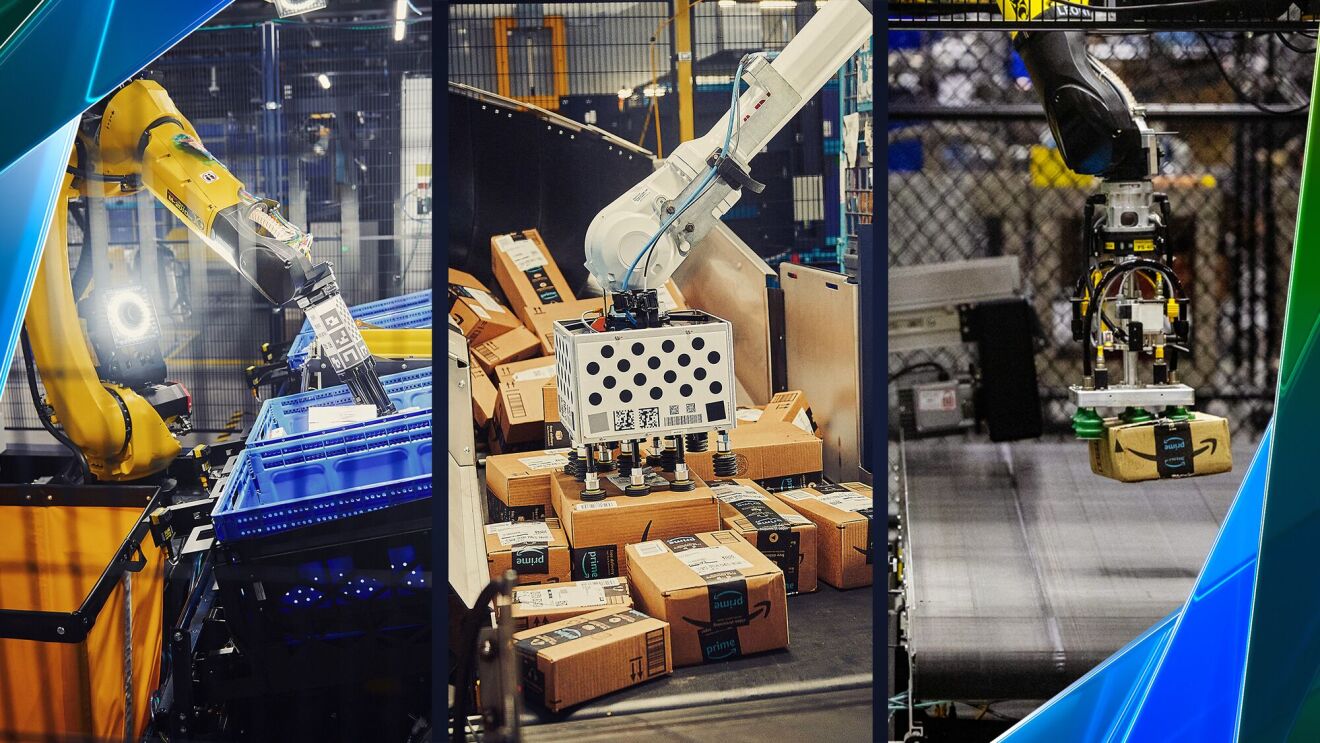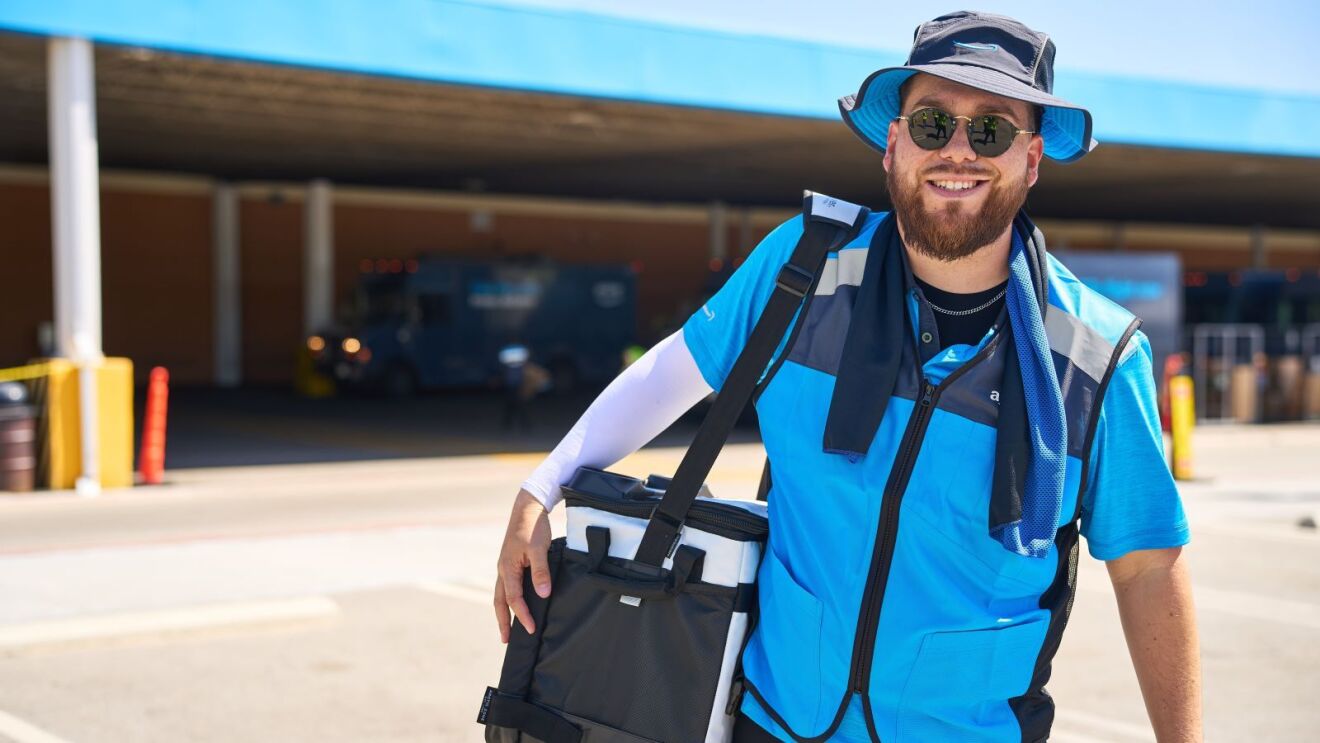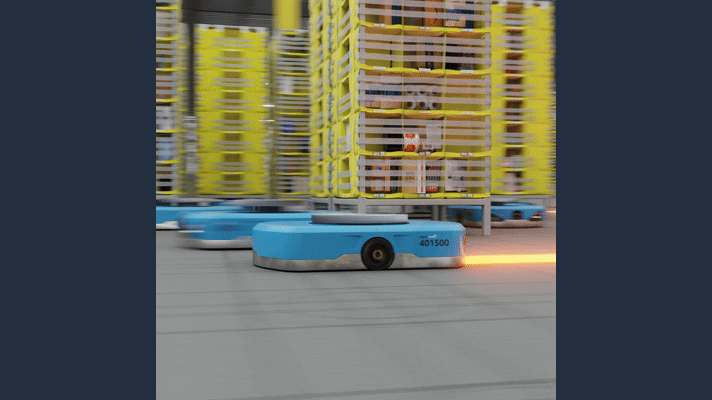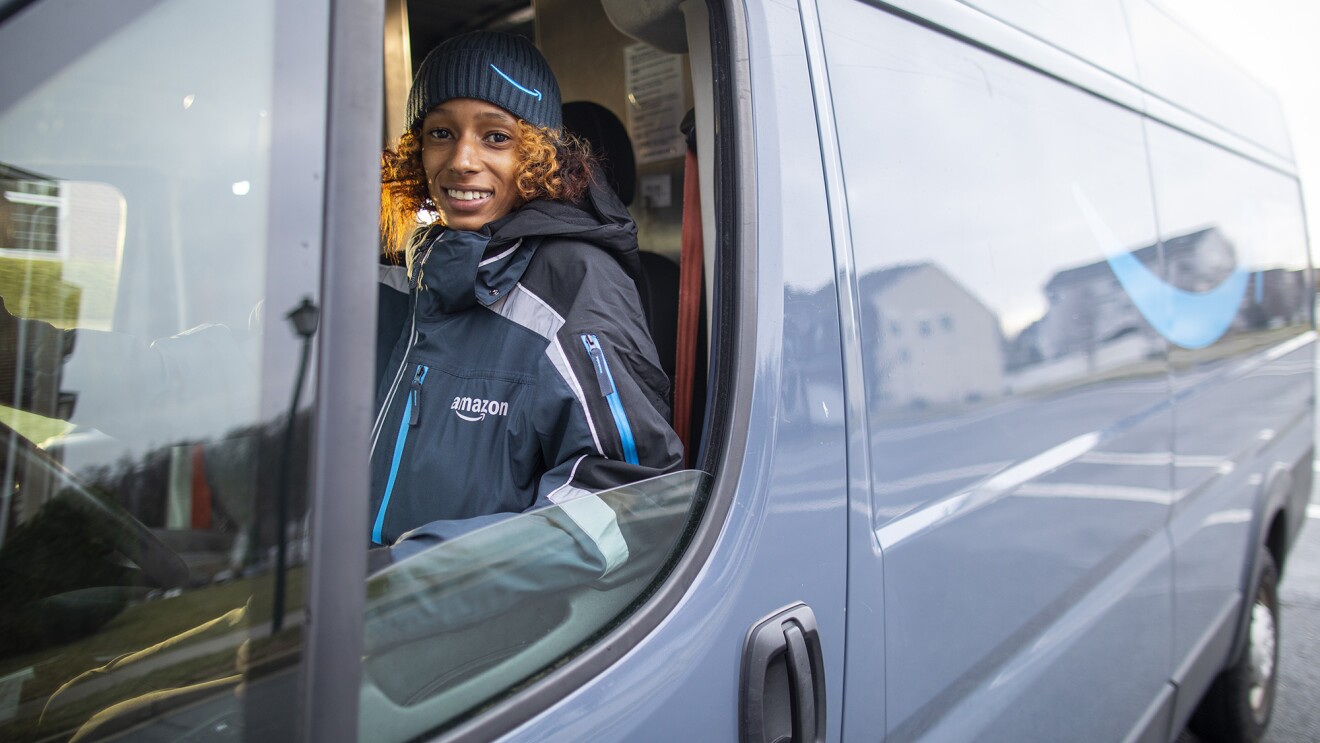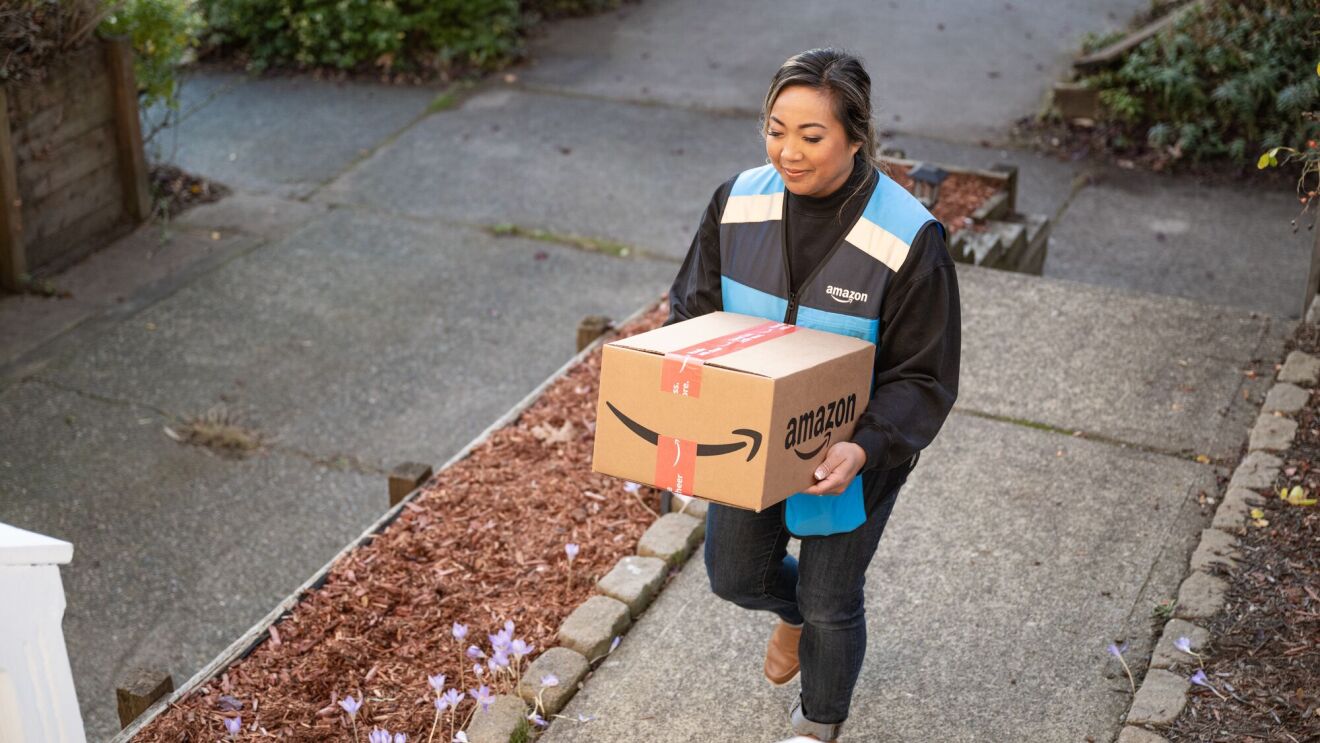Key takeaways
- Amazon’s newest operations technologies include Blue Jay, a system coordinating multiple robotic arms, and Project Eluna, an agentic AI model helping operators make more informed decisions.
- Blue Jay and Project Eluna work alongside operations employees to create safer and more efficient workspaces.
- These advanced innovations build on several recent AI and automation breakthroughs for our operations, like Vulcan and DeepFleet.
Every time we innovate across Amazon’s operations network, we start with a simple question: “How can we make work safer, smarter, and more rewarding for our employees?” Just ahead of this year’s busiest shopping season, two new systems—Blue Jay and Project Eluna—help answer that question. These systems combine robotics and AI to reduce physically demanding tasks, simplify decisions, and open new career opportunities for the employees who keep Amazon moving.
“Our latest innovations are great examples of how we’re using AI and robotics to create an even better experience for our employees and customers,” says Tye Brady, chief technologist for Amazon Robotics. “The goal is to make technology the most practical, the most powerful tool it can be—so that work becomes safer, smarter, and more rewarding.”
Blue Jay lightens repetitive work and accelerates delivery
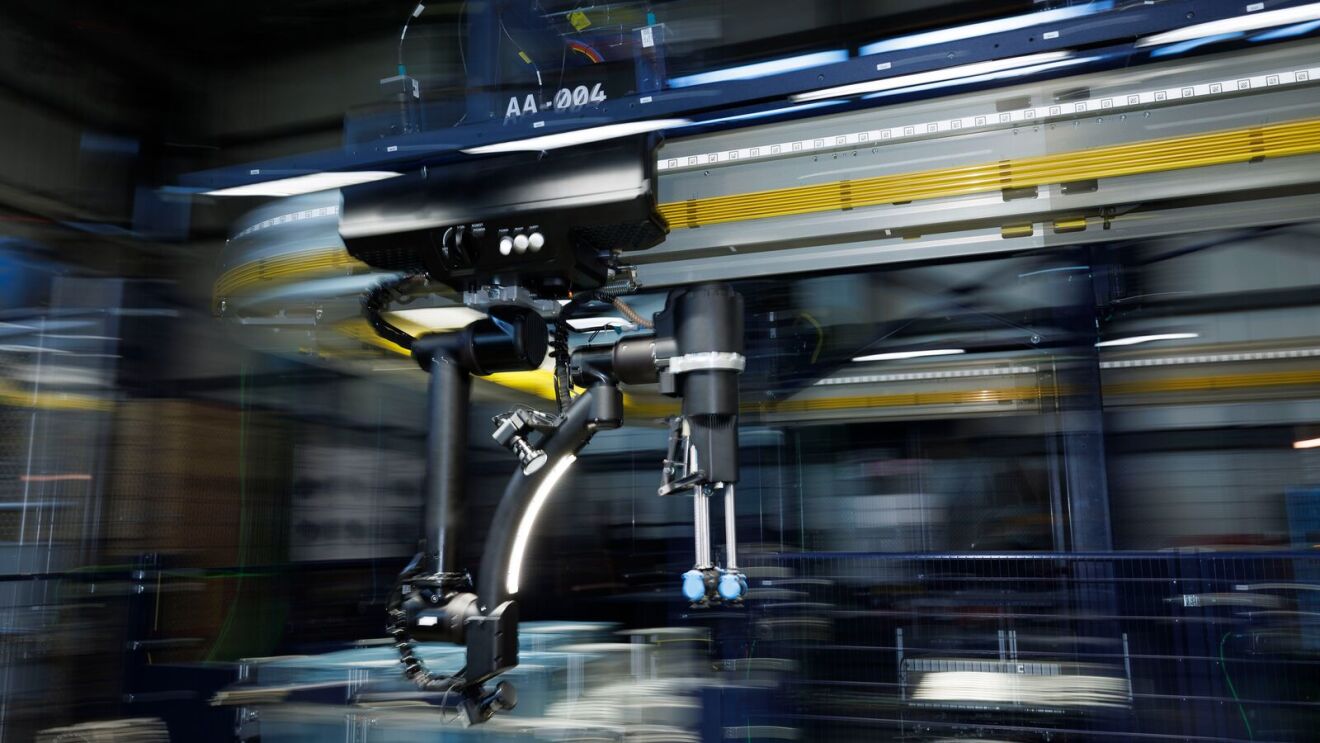
Blue Jay is an extra set of hands that helps employees with tasks that involve reaching and lifting. It’s a next-generation robotics system that coordinates multiple robotic arms to perform many tasks at once, collapsing what used to be three separate robotic stations into one streamlined workspace that can pick, stow, and consolidate in a single place. The result: more support for front-line employees, while creating greater efficiency in less physical space.
Visually, Blue Jay operates like a juggler who never drops a ball—only here, the “balls” are tens of thousands of items moving at high speed. It’s also like a conductor leading an orchestra, with every motion in harmony.
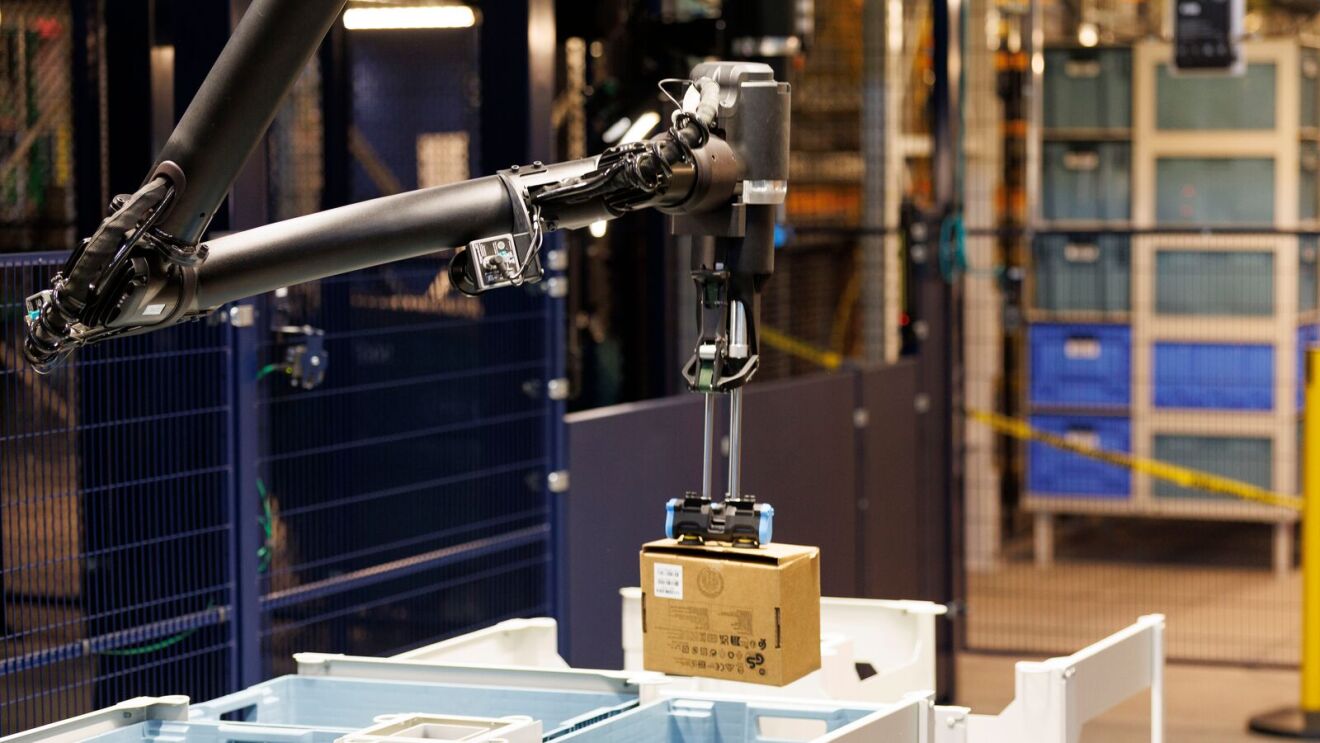
Blue Jay’s development moved from concept to production in just over a year—a process that formerly took three or more years for earlier Amazon systems like Robin, Cardinal, or Sparrow. The reason: Years of trial-and-error were condensed into months of development thanks to advancements in AI. Our engineers were able to iterate on dozens of prototypes for Blue Jay with the use of digital twins. These are an advanced form of simulation that now allow us to experiment virtually, using real physics to accelerate what we build. Combined with the AI, data, and learned experiences of our current robot fleet, we’re able to build systems like Blue Jay smarter and more quickly.
Blue Jay is already being tested in production at one of our facilities in South Carolina, where it’s already able to pick, stow, and consolidate approximately 75% of all the various types of items we store at our sites. Over time, it will serve as a core technology helping power Amazon’s Same-Day sites. For customers, that means faster deliveries at low cost. For employees, it means smarter tools and even safer work.
Project Eluna gives operators more foresight, with fewer dashboards
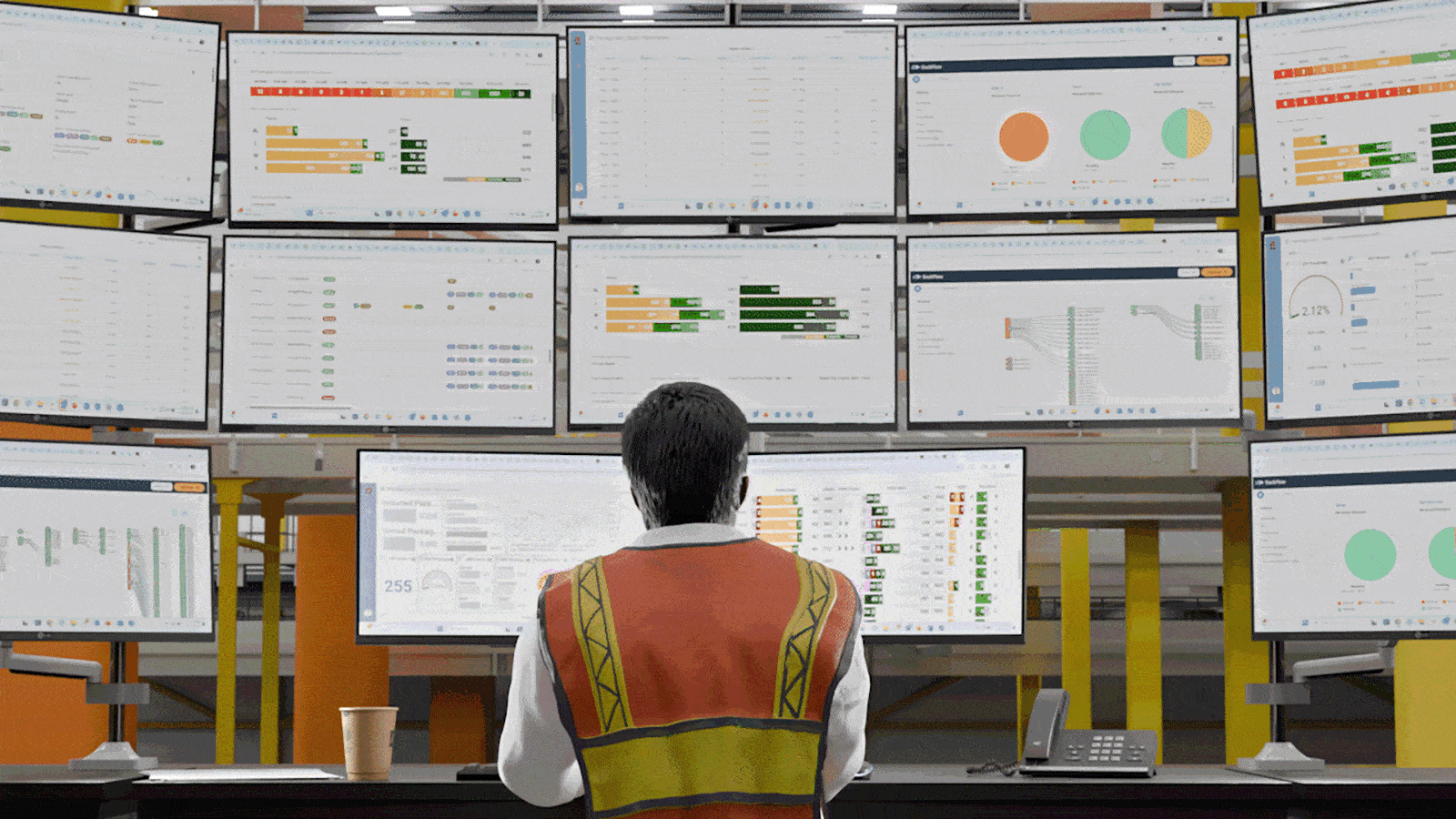
Operations managers constantly monitor dozens of dashboards while responding to technology breakdowns, reallocating resources, and making rapid-fire decisions. Project Eluna acts like an extra teammate, helping reduce that cognitive load. Project Eluna is an agentic AI system—designed to act with a degree of autonomy, reasoning through complex operational situations and recommending actions to operators. It pulls in historical and real-time data across a building to anticipate bottlenecks and keep operations running smoothly.
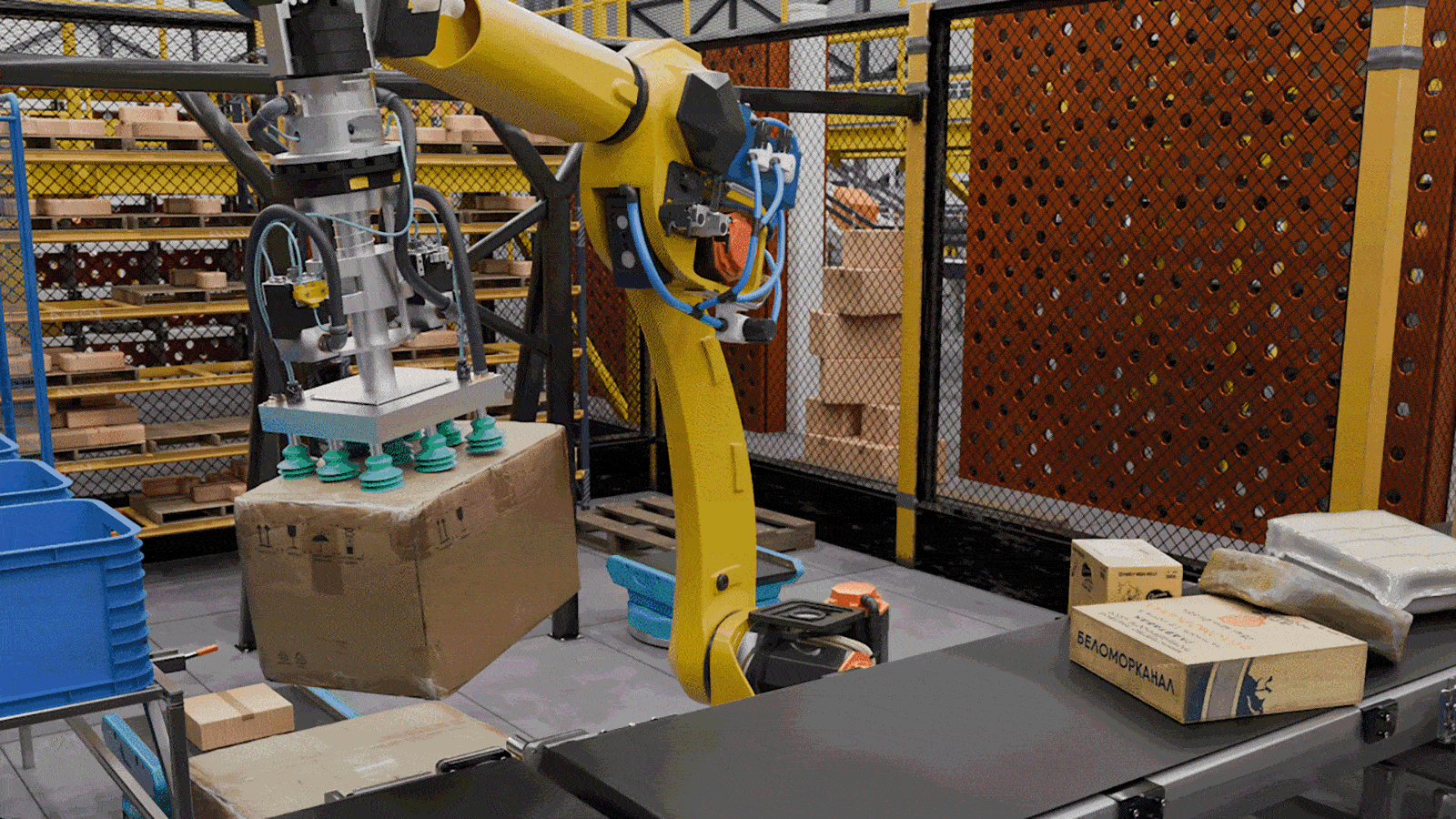
Project Eluna will be piloted at a fulfillment center in Tennessee to assist operators this holiday season, working initially on sortation optimization. Operators can ask questions like, “Where should we shift people to avoid a bottleneck?” and receive clear, data-backed recommendations. The goal: less putting out fires, more foresight.
Employees at the center: Safer work, smarter tools, greater opportunity
Across these innovations, the goal is consistent: reduce highly repetitive tasks, improve ergonomics, and expand career pathways. Blue Jay helps keep employees working in their ergonomic “power zone,” reducing repetitive reaching and lifting. Project Eluna helps leaders plan better and spend more time coaching teams rather than chasing data.
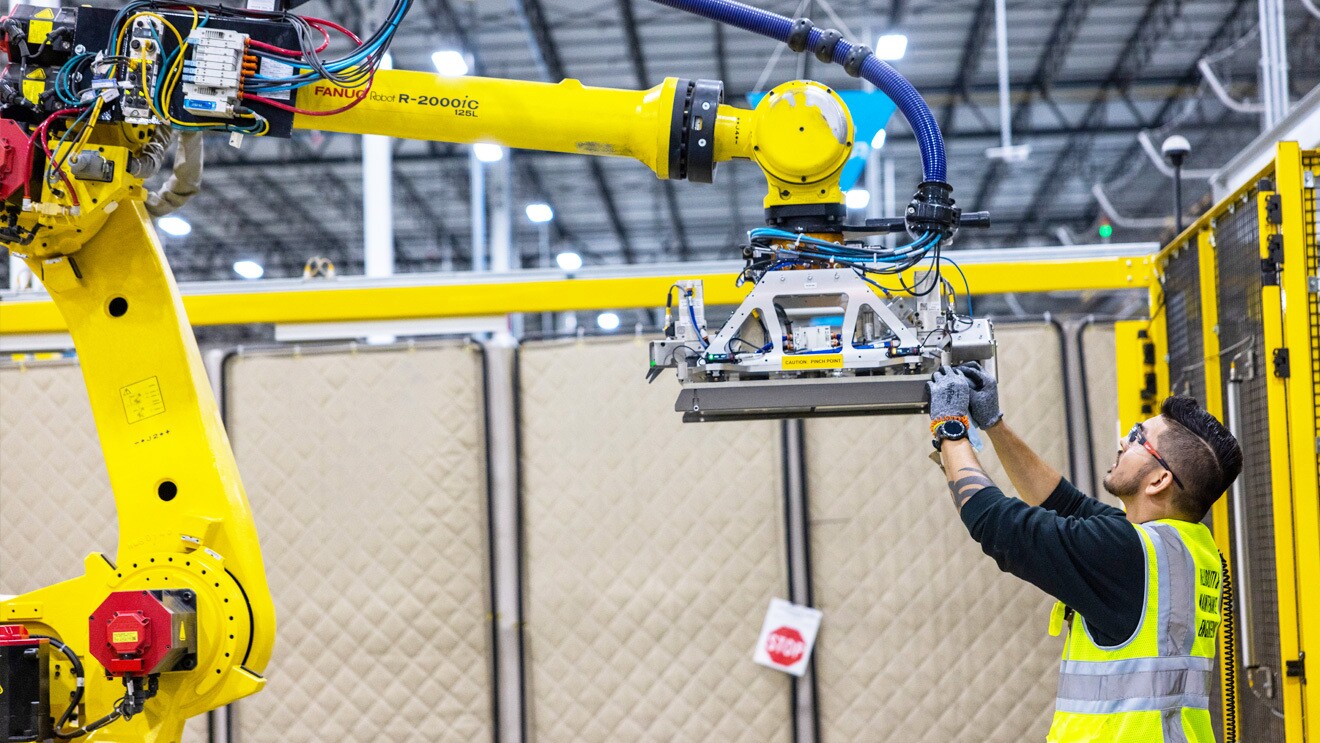
Amazon is also investing in training, so employees feel confident working with AI-supported tools—through education programs like Career Choice and apprenticeships in mechatronics and robotics, alongside new AI education offerings that help employees understand where these systems fit into daily work and careers.
Building on a foundation of innovation
Blue Jay and Project Eluna join other new robotics and AI systems we launched this year, including Vulcan, Amazon’s first robot with a sense of touch designed to assist with ergonomically challenging tasks, and DeepFleet, an AI foundation model that coordinates large fleets of mobile robots across facilities.
Together, these systems illustrate how AI that learns from the physical world can improve our workplace and enhance the employee experience. This workplace innovation is particularly important since no company has created more jobs in the U.S. over the past decade than Amazon. And we continue to grow, we're actively hiring at operations facilities across the country, with recent announcements to fill 250,000 positions for the holiday season.
“The real headline isn’t about robots,” Brady said. “It’s about people—and the future of work we’re building together.”
Next, meet even more Amazon robots that provide employees with the right technology to make their workday safer.
Trending news and stories
